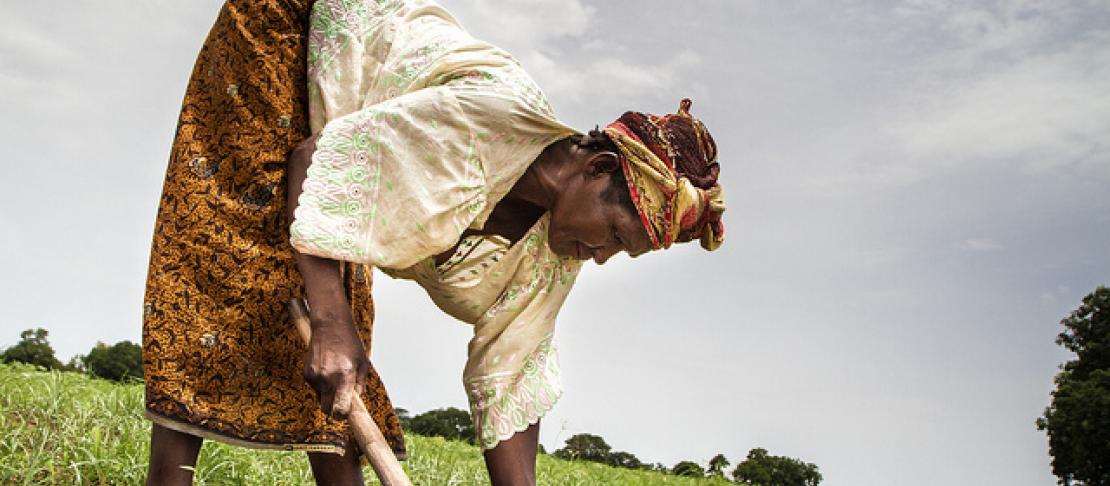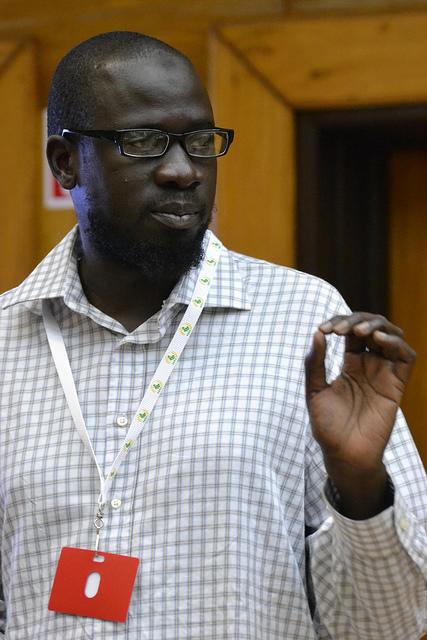Could shooting stars help explain the rains?

It might seem foreign to some of us, but when a farmer sees a shooting star on the evening sky, he is probably not making a wish. He is more likely thinking of rain.
Truth of the matter is, many decisions that smallholder farmers make are still based on the same signs they’ve used for decades.
These ‘traditional’ methods to predict weather events, such as a change in wind direction or the appearance of a specific insect, might seem unscientific to us, but for farmers they still matter. And some of them are more closely connected to ‘science’, than you might think.
What makes a farmer tick
Understanding how and why farmers make decisions is one of our key goals here at the CGIAR Research Program on Climate Change, Agriculture and Food Security (CCAFS). If we are to help farmers manage the new types of risks which are unravelling under a more variable climate, we need to make sure solutions address their concerns and beliefs. So what does make a farmer tick?
This is exactly the question occupying our researchers working with farmers on climate information forecasts in research sites located in Senegal, Kenya and India.
Learn more: Where we work
Tradition meets science in climate forecasting
By slowly integrating more scientific climate projections, while recognising and drawing parallels to ‘traditional’ methods, farmers and researchers in these sites are reaching ‘consensus forecasts’.
Simply put, we are developing forecasts that integrate science with traditional observations. This way, climate information messages become understandable and usable while reflecting existing weather knowledge.
“We are not denying the methods they are using. Then the farmers wouldn’t accept our forecasts,” climate information expert Ousmane Ndiaye explained. “Discussion and dialogue between users and producers are key factors in this process.”
Video showcasing our climate forecasting-work in Senegal:
Ousmane Ndiye was one of the presenters at our side event ‘Climate-Smart Villages in Africa: Opportunities for farmers and communities’ held in the midst of Africa Agriculture Science Week (AASW).
“Today many farmers lack an understanding about the probabilistic nature of climate forecast information. So at the end of the day, we want to show farmers we are doing the same thing as them, predicting future climate, but we are approaching it in a different way,” he continued.
Get Ousmane's presentation from the side event:
Even though our researchers found that shooting starts and their connection to rainfall are more coincidental than scientifically-based, there are still many ‘traditional’ methods that have ‘scientific’ value.
For instance, when the wind does change direction, it can actually be an indication that the ‘Harmattan’, the dry and dusty West African wind, is changing into the ‘Monsoon’ and that the rainy season is coming. Other methods, such as watching how animals behave can also be useful. Snakes and frogs are very sensitive to changes in the weather.
Highlighting these parallels to build an 'entry point' for climate forecasting with farmers, is therefore all the more important.
Learn more: Putting climate forecasts into farmers' hands
Download case study: Communicating seasonal forecasts to farmers in Kaffrine, Senegal for better agricultural management
Climate information is only one piece of the climate and food security puzzle

Ousmane Ndiaye talking
about climate forecasts.
Photo: C. Schubert
Many things are important for ensuring food security under a variable climate. Not just getting the information across. Farmers also need the right tools and proper agricultural education.
In addition, Ousmane emphasized, communication and building trust are what will ensure farmers pick up the messages and use them.
"If we don’t make the climate information and messages relevant to farmer’s' areas and understandable, farmers will simply not use them."
What are the results saying?
Some initial results are showing that farmers who have been trained on climate forecasts and how to use them are investing more in their fields, as they feel more secure about predicting the future.
Other emerging results are showing that farmers are keen to learn more and are getting the hang of these forecasts. It is a great investment made – as it is an investment in people.
Our researchers will continue to train farmers on climate forecasting and how they can use these to make better on-farm decisions that will help them manage climate risks going into the future. Results and updates will be published on our web site.



